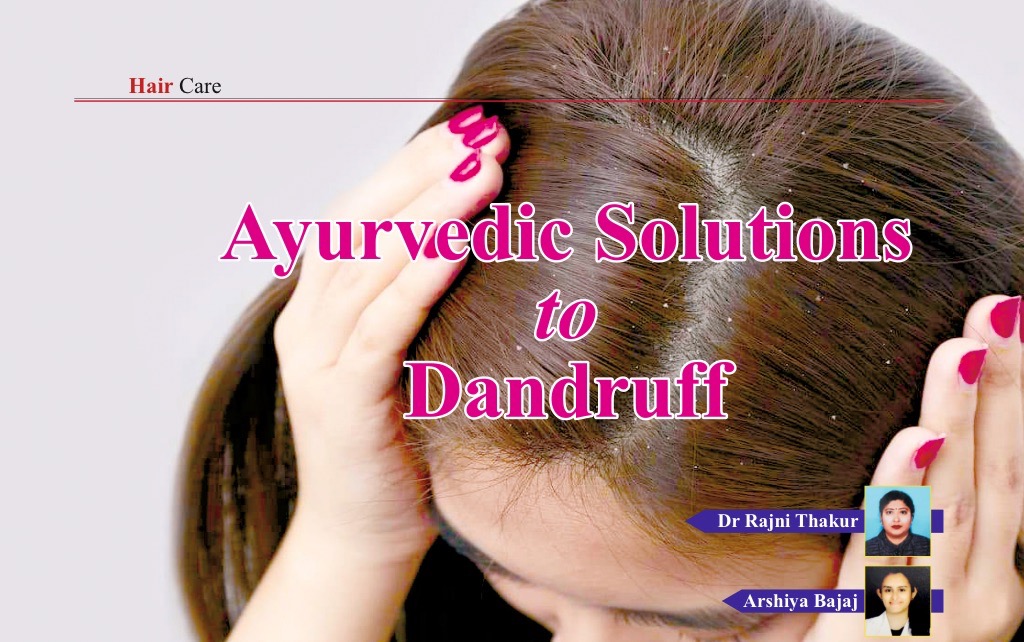Dandruff is a common scalp disorder affecting almost half of the population in any geographical region at any age, gender and ethnicity. No population would have passed through freely without dandruff at some stage in their life. It affects aesthetic value of a person. It has been well established that keratinocytes play a key role in expression and generation of immunological reactions during dandruff formation.
Dandruff is a common scalp disorder affecting almost half of the population in any geographical region at any age, gender and ethnicity. No population would have passed through freely without dandruff at some stage in their life. It affects aesthetic value of a person. It has been well established that keratinocytes play a key role in expression and generation of immunological reactions during dandruff formation.
In physiological spectrum of scaling, about 487000 cells/sq cm get released normally and this number goes up to 800000/sq cm during dandruff. It is difficult to define dandruff because it blurs with seborrhoeic dermatitis and some other scaling conditions.
Histological examination reveals the scattered presence of lymphoid cells and squirting capillaries in papillary dermis with hints of spongiosis and focal parakeratosis. Conceptually, dandruff is a dander and represents physiological scaling with a cluster of corneocytes, which have retained a large degree of cohesion with one another and detach as such from the surface of stratum corneum. The role of lipophilic yeast belonging to genus malassezia is widely accepted to play a role in dandruff. During dandruff, the levels of malassezia increase by 1.5 to 2 times its normal level. The response to treatment is commonly swift but transient.
The non microbial causes of dandruff are well established. Excessive exposure to sunlight is known to cause desquamation of scalp. Irritation of scalp due to over shampooing, frequent combing, use of certain cosmetic products, dusts and dirt also to some extent cause dandruff.
The common ingredients used in anti dandruff preparations are sulphur, salicylic acid, tar, steroids, antimicrobial agents such as selenium, sulfide, imidazoles and hydroxypyridones which provide temporary relief only and the person becomes habitual to these harsh chemicals.
Dandruff can be considered as darunak in ayurvedic parlance possessing resemblance in clinical manifestations. Ayurveda places the dandruff in the category of kshudra rogas, which appear due to imbalance of all 3 doshas. The primary doshas involved are kapha and vata.
The ayurvedic line of treatment is to generally pacify kapha and vata through herbal medications as well as tailor- made diet and lifestyle changes.
HERBAL HAIR MASKS
1. Paste of chironjee seeds, mulethi root, kushth stem and urad seeds, mixed with honey.
2. Mango seeds and harad mask.
3. Amalki and mango seeds paste.
4. Mulethi churan in coconut oil.
5. Neeloptal, keshar, mulethi, black til and amalki churan hair mask.
6. Soaked black gram in kanji for 3 weeks and then the prepared paste as a mask.
7. Soaked methi seed powder and triphala churan in curd for twelve hours and then applied as a mask.
HAIR WASHES
• Harad, bahera and amla decoction
• Reetha and shikakai decoction
Panchkarma
Includes detoxification procedures like abhyanga, swedana, nasya, raktmokshan and shirobasti can play a major role in managing dandruff.
Mud therapy
Mud packs are typically used for local application. To make a pack, keep the wet cotton cloth in the wet mud so that the cloth is soaked properly. Now make the multilayers of this cloth and place on the head for 30 minutes. The high mineral content of mud helps in detoxifying and healing of the scalp skin keeps it hydrated and increases the circulation.
Classical formulations
• Neem tail
• Gandhak tail
• Nalpamaradi tail
• Durdurpatradi tail
Diet
Diet is considered as one of the factors responsible for chronic dandruff. Incorporating food rich in vitamins and minerals like almonds, cashews, walnut, spinach, brocolli, soyabean, carrots and sesame seeds helps in removing it permanently.
Dr Rajni Thakur
Associate Professor,
Department of Shalakya Tantra,
Dayanand Ayurvedic College,
Mahatma Hansraj Marg, Jalandhar-8
Arshiya Bajaj
BAMS,
Jalandhar.







 Dec 2024
Dec 2024
 May 2024
May 2024
 September 2022
September 2022
 April 2022
April 2022
 October 2020
October 2020
 Jan 2020
Jan 2020
 June 2019
June 2019
 January-February 2019
January-February 2019
 Augest-September
Augest-September
 April 2018
April 2018
 November 2017
November 2017
 June 2017
June 2017
 November 2016
November 2016
 September 2015
September 2015
 March 2015
March 2015
 July 2014
July 2014
 January 2014
January 2014
 July2013
July2013
 March 2013
March 2013
 May 2012
May 2012
 May 2011
May 2011
 Sep 2010
Sep 2010
 Jun 2010
Jun 2010
 Feb 2010
Feb 2010
 December 2009
December 2009
 August 2009
August 2009
 June 2009
June 2009
 Feb 2009
Feb 2009
 December 2008
December 2008
 October 2008
October 2008
 March 2008
March 2008
 July 2008
July 2008
 May 2008
May 2008